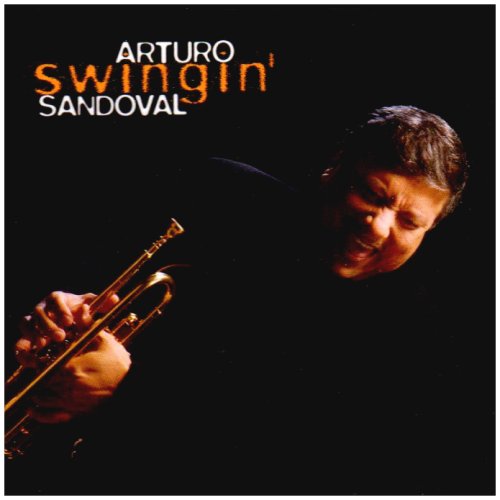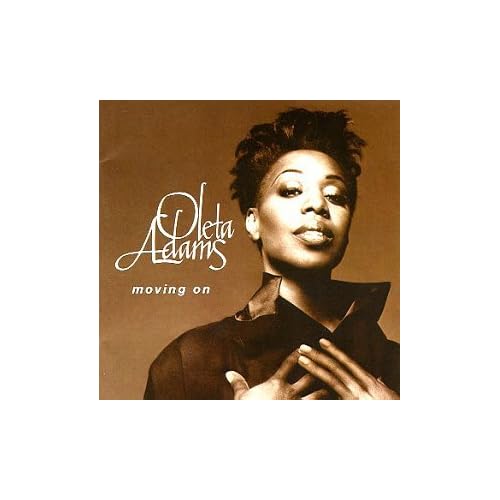mrarroyo
Headphoneus Supremus
- Joined
- Jul 27, 2005
- Posts
- 19,073
- Likes
- 42
Graham Slee: Solo SRG versus Solo SRG-II
A while back I sent out an example of the Solo SRG with a PSU1 regulated power supply to various members of Head-Fi, a headphone community/forum. Interestingly we all agree the Solo SRG sounded very good and could benefit from a bit more emphasis of the bass notes. Well this feedback was given to Graham who worked hard to increase the lower register presentation, i.e. BASS.
The result is the Solo SRG-II! I have had this unit for a while and since in my experience with various of Graham’s products it would benefit from an extended burn-in process I allowed it to burn-in for 600 hours before I started to seriously listen to it. You can read more about the Solo SRG-II at: Headphone Amplifiers by Graham Slee
As typical of my evaluations I will do this over several days and with different music and headphones. For most of the comparisons I plan on using a Meridian 506.20 as a source feeding the two Solo’s via a pair of RCA interconnects built by Moon Audio using Silver Sonic BL-1 and terminated using Cardas GRCN Silver/Rhodium RCA’s. You can read more about the interconnects at: Interconnects
For the comparison I will be using the switching power supply that is part of the “green initiative” that Graham is implementing with his amps. I have a fully regulated PSU1 but only one and in the interest of consistency I am using the same power supply, source, and interconnect. Note: I realize the full potential will not be heard with the switching PSU but it should allow for the major differences to come out, then the amp could be further evaluated with the regulated PSU1. Here is a picture of the switching PSU with the proper USA plugs; additional plugs to be used through the world are included, nice touch in my opinion. For your information the power is first going through a Monster Power Reference PowerCenter HTS 3500 MkII.

Day One
For today’s comparison I decided to use the AKG K501 which has been re-cabled by Alex of APureSound using a 10’ V3 cable covered in Super Nylon and terminated in a ¼” Furutech plug. Here is picture of the K501.

As far as music I started the day with an eclectic mix from the Emerald CD, followed by a relaxing compilation provided by Corner Café: Relaxing Jazz, and finished the stint with a fast paced jazz with Swingin’ by Arturo Sandoval. Here are some pictures of the albums used.



Since I am in the mood to post pictures
 here is one of the gear in use during today’s comparison.
here is one of the gear in use during today’s comparison.

So how successful was Graham? Well as far as additional bass he was able to increase its presentation and the fact I can hear it with the K501 is in my opinion a phenomenal achievement. For those not familiar with the K501 it is a lovely headphone known for one of the best midrange presentation amongst dynamic headphones. However the K501 is not known for reproducing lots of bass which was the reason I decided to start the comparison with a headphone not known to be a “bass head” unit. Kind of stacking the deck against the Solo SRG-II, however I failed and the Solo SRG-II passed with flying colors.
As you can imagine I am very satisfied with the additional bass, it is there and you can hear it easily enough, plus you can hear a “filling out” of the lower to mid bass as well. While this may entice some what really has me “tickled to death” is the wider soundstage, longer decay of the notes, and additional clarity (beautifully heard on the opening and closing of the hi-hat) of the Solo SRG-II. I am surprised that Graham did not mention this, but I am not surprised. He does not like to put words in his customer mouths instead he rather we find out for ourselves and report back what shines and what needs additional improvement.
I will close today’s comments with the word “openness”. That is what I am hearing, an open clear sound with outstanding micro detail and superb decay. I sure hope the next round with a Grado RS-1 and AKG K701 re-cabled by Alex of APureSound is more of the same.
As with any kind of review/impression these are my opinions based on my gear, expectation and biases. Others will think differently and may reach different conclusions based on their own set of constraints. Also gear at a higher cost level could yield to different results especially with better sources, cables, and headphones. Hope you enjoyed this first step in the comparison between these very good amps. Cheers!
Day Two
I was requested to try low impedance cans like the Denon AH-DX000 series with both of the Solo’s. To that effect I chose my AH-D2000 which have had extensive mods, such as:
- MarkL Mods
- MarkL V4 Bubinga Wood Cups
- Re-cable by Zysonic using the Xev (a silver plated copper cable)
- JMoney leather ear-pads
Since I felt like mixing it up I chose my 6th Generation 160 Gb iPod Classic filled with Apple Lossless files. The dock is a Bamboo Home Dock by Ken of ALO, and I used the same RCA interconnects built by Moon Audio using Silver Sonic BL-1 and terminated using Cardas GRCN Silver/Rhodium RCA’s.
Here is a picture of today’s configuration.

For music I chose Moving On by Oleta Adams and Naked and True by Randy Crawford.


As I usually do I matched the volume out using a Radio Shack Digital Sound Level Meter, model number 33-2055 (Digital-Display Sound-Level Meter - RadioShack.com).
The differences I heard when using the K501 are far more pronounced with the Denon AH-D2000. It is much easier to perceive the widening of the soundstage (headstage). The difference in bass is also much easier to hear, there is even enough difference to say the bass has more impact out of the SRG-II over the SRG. Another thing I heard with the Denon’s is that the SRG has a bit more forward upper mids than the SRG-II.
I was so intrigue by the differences I heard with the Denon over the AKG that I decided to try a Grado RS-1 which presentation it would offer. The RS-1 gave the same contrast between the Solo SRG and Solo SRG-II, as did the K501. I then got interested in finding if the differences could be repeated with another close can the Ultrasone HFI-780 (re-cabled by Alex of APureSound and with Beyer DT250 velour pads). And … yes the HFI-780 took the path of the D2000.
So with this limited comparison it appears that I can hear a wider soundstage (headstage) and deeper bass with any of the four cans I used. However the closed cans present a wider soundstage, even deeper bass, and have a slight more forward upper mids (this last attribute is with the Solo SRG). Since this was not a scientific test and the population of headphones was only four it would he hard to draw conclusions on how other open/closed cans would perform. However it was fun experimenting.
I know which one I prefer, hint I value wide soundstage and extension.
A while back I sent out an example of the Solo SRG with a PSU1 regulated power supply to various members of Head-Fi, a headphone community/forum. Interestingly we all agree the Solo SRG sounded very good and could benefit from a bit more emphasis of the bass notes. Well this feedback was given to Graham who worked hard to increase the lower register presentation, i.e. BASS.
The result is the Solo SRG-II! I have had this unit for a while and since in my experience with various of Graham’s products it would benefit from an extended burn-in process I allowed it to burn-in for 600 hours before I started to seriously listen to it. You can read more about the Solo SRG-II at: Headphone Amplifiers by Graham Slee
As typical of my evaluations I will do this over several days and with different music and headphones. For most of the comparisons I plan on using a Meridian 506.20 as a source feeding the two Solo’s via a pair of RCA interconnects built by Moon Audio using Silver Sonic BL-1 and terminated using Cardas GRCN Silver/Rhodium RCA’s. You can read more about the interconnects at: Interconnects
For the comparison I will be using the switching power supply that is part of the “green initiative” that Graham is implementing with his amps. I have a fully regulated PSU1 but only one and in the interest of consistency I am using the same power supply, source, and interconnect. Note: I realize the full potential will not be heard with the switching PSU but it should allow for the major differences to come out, then the amp could be further evaluated with the regulated PSU1. Here is a picture of the switching PSU with the proper USA plugs; additional plugs to be used through the world are included, nice touch in my opinion. For your information the power is first going through a Monster Power Reference PowerCenter HTS 3500 MkII.

Day One
For today’s comparison I decided to use the AKG K501 which has been re-cabled by Alex of APureSound using a 10’ V3 cable covered in Super Nylon and terminated in a ¼” Furutech plug. Here is picture of the K501.

As far as music I started the day with an eclectic mix from the Emerald CD, followed by a relaxing compilation provided by Corner Café: Relaxing Jazz, and finished the stint with a fast paced jazz with Swingin’ by Arturo Sandoval. Here are some pictures of the albums used.



Since I am in the mood to post pictures


So how successful was Graham? Well as far as additional bass he was able to increase its presentation and the fact I can hear it with the K501 is in my opinion a phenomenal achievement. For those not familiar with the K501 it is a lovely headphone known for one of the best midrange presentation amongst dynamic headphones. However the K501 is not known for reproducing lots of bass which was the reason I decided to start the comparison with a headphone not known to be a “bass head” unit. Kind of stacking the deck against the Solo SRG-II, however I failed and the Solo SRG-II passed with flying colors.
As you can imagine I am very satisfied with the additional bass, it is there and you can hear it easily enough, plus you can hear a “filling out” of the lower to mid bass as well. While this may entice some what really has me “tickled to death” is the wider soundstage, longer decay of the notes, and additional clarity (beautifully heard on the opening and closing of the hi-hat) of the Solo SRG-II. I am surprised that Graham did not mention this, but I am not surprised. He does not like to put words in his customer mouths instead he rather we find out for ourselves and report back what shines and what needs additional improvement.
I will close today’s comments with the word “openness”. That is what I am hearing, an open clear sound with outstanding micro detail and superb decay. I sure hope the next round with a Grado RS-1 and AKG K701 re-cabled by Alex of APureSound is more of the same.
As with any kind of review/impression these are my opinions based on my gear, expectation and biases. Others will think differently and may reach different conclusions based on their own set of constraints. Also gear at a higher cost level could yield to different results especially with better sources, cables, and headphones. Hope you enjoyed this first step in the comparison between these very good amps. Cheers!
Day Two
I was requested to try low impedance cans like the Denon AH-DX000 series with both of the Solo’s. To that effect I chose my AH-D2000 which have had extensive mods, such as:
- MarkL Mods
- MarkL V4 Bubinga Wood Cups
- Re-cable by Zysonic using the Xev (a silver plated copper cable)
- JMoney leather ear-pads
Since I felt like mixing it up I chose my 6th Generation 160 Gb iPod Classic filled with Apple Lossless files. The dock is a Bamboo Home Dock by Ken of ALO, and I used the same RCA interconnects built by Moon Audio using Silver Sonic BL-1 and terminated using Cardas GRCN Silver/Rhodium RCA’s.
Here is a picture of today’s configuration.

For music I chose Moving On by Oleta Adams and Naked and True by Randy Crawford.


As I usually do I matched the volume out using a Radio Shack Digital Sound Level Meter, model number 33-2055 (Digital-Display Sound-Level Meter - RadioShack.com).
The differences I heard when using the K501 are far more pronounced with the Denon AH-D2000. It is much easier to perceive the widening of the soundstage (headstage). The difference in bass is also much easier to hear, there is even enough difference to say the bass has more impact out of the SRG-II over the SRG. Another thing I heard with the Denon’s is that the SRG has a bit more forward upper mids than the SRG-II.
I was so intrigue by the differences I heard with the Denon over the AKG that I decided to try a Grado RS-1 which presentation it would offer. The RS-1 gave the same contrast between the Solo SRG and Solo SRG-II, as did the K501. I then got interested in finding if the differences could be repeated with another close can the Ultrasone HFI-780 (re-cabled by Alex of APureSound and with Beyer DT250 velour pads). And … yes the HFI-780 took the path of the D2000.
So with this limited comparison it appears that I can hear a wider soundstage (headstage) and deeper bass with any of the four cans I used. However the closed cans present a wider soundstage, even deeper bass, and have a slight more forward upper mids (this last attribute is with the Solo SRG). Since this was not a scientific test and the population of headphones was only four it would he hard to draw conclusions on how other open/closed cans would perform. However it was fun experimenting.
I know which one I prefer, hint I value wide soundstage and extension.




